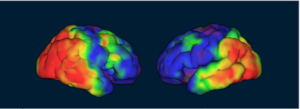CapAIBL – In-vivo quantitative markers of the aging brain

CapAIBL provides reliable, accurate, standardised imaging to identify Alzheimer’s before symptom onset.
Our tool simplifies and standardises imaging biomarker quantification.
The challenge
Advances in medical imaging now permit in-vivo visualisation of pathological markers of dementia that can clarify the diagnosis and prognosis. This enables early detection of pathology in individuals at risk of Alzheimer’s dementia.
Early detection facilitates decision-making regarding treatment and allows plans to be put in place to safeguard quality of life.
However, identifying pathological markers using in-vivo visualisation is complex.
PET scans provide poor anatomical information. Visual reading and cortical quantification are difficult tasks that must be performed manually by an expert.
Specialists must be specifically trained in interpreting the images. The process of visual interpretation is tedious and time-consuming.
Our response
The primary focus of our Alzheimer’s-related project(s) has been to develop image analysis algorithms that provide reliable, accurate and standardised imaging biomarker quantification for FDG, tau and amyloid scans. Our work also involves enabling easier visualisation of the images.
We developed CapAIBL. The software generates a report that provides comprehensive results along with images that can be readily interpreted by scientists and the referring doctor.
With this work, we’ve also shown that Aβ starts to accumulate in the brain 20 years before the onset of Alzheimer’s disease.
This provides a broad window where potential interventions can be performed.

CapAIBL provides an easier visualisation of images that can be readily interpreted by scientists and referring doctors.
Benefits
Using the CSIRO technology, health professionals are able to provide a more accurate, confident diagnosis or risk prediction, decades before the first symptoms of Alzheimer’s disease.
This will translate into earlier and more effective care for patients.
Simultaneously, this tool allows an unbiased and standardised means of measuring the progression of tau and Aβ accumulation. It can aid subject selection for therapeutic trials and allow anti-Aβ/Anti-tau agents to be measured effectively.
The Australian e-Health Research Centre (AEHRC) is CSIRO's digital health research program and a joint venture between CSIRO and the Queensland Government. The AEHRC works with state and federal health agencies, clinical research groups and health businesses around Australia.
